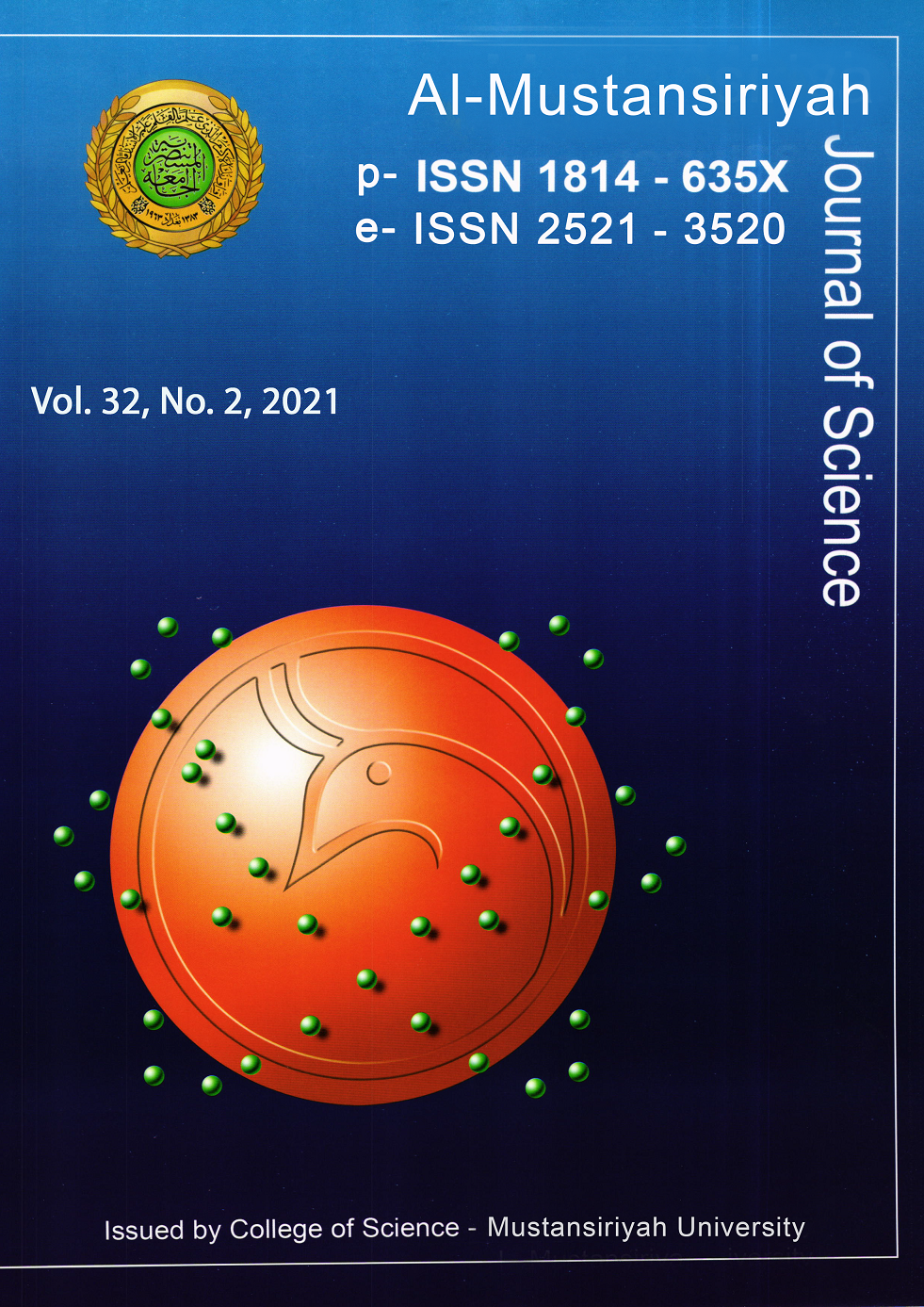Synoptic Situation of 28-31 October 2017 Severe Dust Storm over Iraq
DOI:
https://doi.org/10.23851/mjs.v32i2.980Keywords:
Synoptic, Dust, Aerosols, MODIS, IraqAbstract
The phenomenon of dust storms occurs in areas that are characterized by drought, and lack of rainfalls. There are many such areas around the world, including the Middle East in general and large parts of Iraq in particular. In the last week of October 2017, a severe dust storm occurred over Iraq and lasted for four days, the aim of this work was to investigate the synoptic situation of this severe storm using remote sensing data. Data include daily true-color images, Aerosols Index (AI), surface weather maps, and 850 Mb weather maps. These data were analyzed for the four days of the storm (28-31 Oct 2017). The results showed that the storm was triggered on the 28th of October over the northwestern part of Iraq. The weather maps revealed that the cause, development, and transport of this storm were caused by a low-pressure system. This system was developed just over the source area of dust on the first day of the storm, and two ridges in which one has existed over the north of Iran and the second advanced from Egypt during the second day of the storm. The pattern of the trough and two ridges on the second and third day caused the storm to halt over central and southwestern areas of Iraq and the northern border of Saudi Arabia with Iraq. On the fourth day, the storm was moved by the northwesterly wind towards the south of Iraq and Kuwait.Downloads
References
T. T. Warner, Desert Meteorology. Cambridge University Press, 2004.
A. Al-Hemoud, M. Al-Sudairawi, N. Subramanian, A. Naseeb, and W. Behbehani, "Socioeconomic effect of dust storms in Kuwait". Arabian Journal of Geosciences. 10, 1, 2017, pp. 10-18.
V. Sissakian, N. Al-Ansari, and S. Knutsson, "Sand and dust storm events in Iraq." Natural Science, 05, 2013, pp. 1084-1094.
T. Ghosh, "Dust storm and its environmental implications." Journal of Engineering Computers & Applied Sciences (JECAS), 3, 2014 pp. 30-37.
A. Goudie, and N. Middleton, "Dust storms in the Middle East." Bulletin de la Classe des sciences. 13, 2002, pp. 379-400.
N. J. Middleton, "Dust storms in the Middle East." Journal of Arid Environments, 10, 2, 1986, pp. 83-96.
A. Mashat, and A. Awad, "Synoptic and dynamic study of dust storm event over the Middle-East." Bull. Fac. Sci.,Cairo Univ., 78, 2010, pp. 43-64.
K. J. Al-Jumaily, and M. K. Ibrahim, "Analysis of synoptic situation of dust storms in Iraq," International Journal of Energy and Environment." 4, 2013, pp 851-858.
Hamidi, M., M. Kavianpour, and Y. Shao, (2013): Synoptic analysis of dust storms in the Middle East. Asia-Pacific J. Atmos. Sci., 49(3), pp. 279-286.
A. R. Dehghanpour, A. H. Halabian, and M. Fallahpour, "Synoptic analysis of dust systems in Yazd Province," International journal of Advanced Biological and Biomedical Research, 2, 2014, pp. 854-865.
A. Mashat, and A. Awad, "The synoptic features of the autumn dust classes in Northern Saudi Arabia." International Journal of Advanced Research, 3, 2015, pp. 461-471.
S. Namdari, N. Karimi, A. Sorooshian, Mohammadi A., Gholam A., and S. Sehatkashani, Saviz, "Impacts of climate and synoptic fluctuations on dust storm activity over the Middle East." Atmospheric Environment. 173. 2017, 0.1016/j.atmosenv.2017.11.016.
N. Beegum, I. Gherboudj, N. Chaouch, M. Temimi, H. Ghedira, "Simulation and analysis of synoptic scale dust storms over the Arabian Peninsula." Atmospheric Research. 199, 2017, pp. 62-81.
F. Hasseb, "Meteorological analysis of severe dust storm over Middle East." Al-Mustansiriyah Journal of Science, 29, 1, 2018, pp 1-9.
R. Albarakat, V. Lakshmi, "Monitoring dust storms in Iraq using satellite data." Sensors. 19. 368, 2019, pp.1-11.
A. Mashat, A. Awad, M. Assiri, A. Labban, "Dynamic and synoptic study of spring dust storms over northern Saudi Arabia." Theoretical and Applied Climatology. 10.1007/s00704-020-03095-6.
S. Z. Jassim, and J. C. Goff, Geology of Iraq. Dolin, Prague and Moravian Museure, Brno, Czech Republic. 2008.
D. Hartmann, Global Physical Climatology, 2nd ed., Elsevier, 2016.
S. Salman, S., S. Shamsuddin, I. Tarmizi, C. Eun-Sung, and A. Al-Abadi, "Long-term trends in daily temperature extremes in Iraq." Atmospheric Research, (198), 2017, pp. 97-107.
https://modis.gsfc.nasa.gov/about/media/modis_brochure.pdf
https://aura.gsfc.nasa.gov/omi.html
https://www.ecmwf.int/en/forecasts/datasets/reanalysis-datasets/era-interim
H. Cao, F. Amiraslani, J. Liu, and N. Zhou, "Ientification of dust storm source areas in West Asia using multiple environmental datasets." Science of The Total Environment. 502, 2015, pp 224-235.
CrossRef |
">PubMed
Downloads
Key Dates
Received
Accepted
Published
Issue
Section
License
Copyright (c) 2021 Al-Mustansiriyah Journal of Science

This work is licensed under a Creative Commons Attribution 4.0 International License.
(Starting May 5, 2024) Authors retain copyright and grant the journal right of first publication with the work simultaneously licensed under a Creative Commons Attribution (CC-BY) 4.0 License that allows others to share the work with an acknowledgement of the work’s authorship and initial publication in this journal.






















